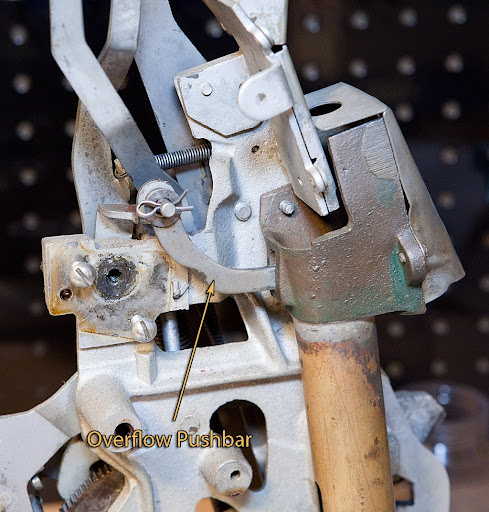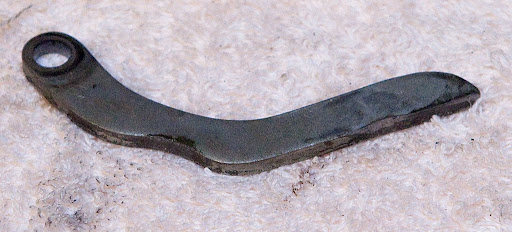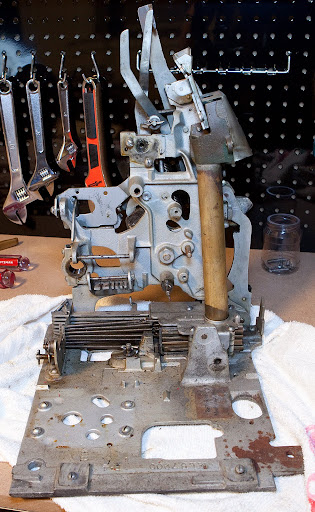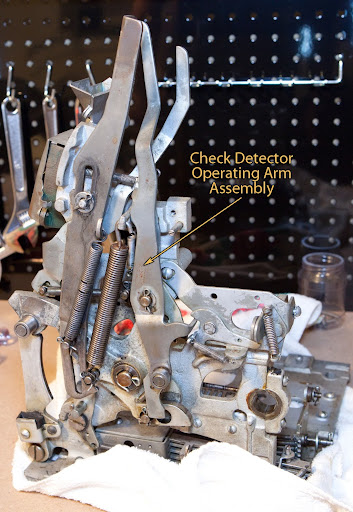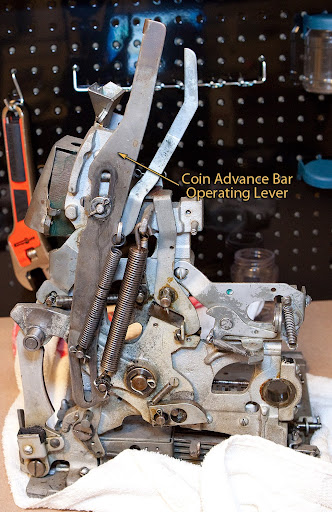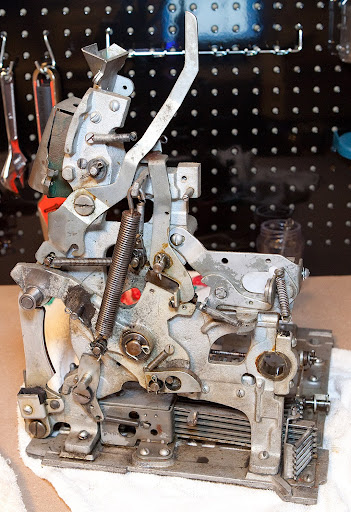The next three parts are a snap to remove. First, the overflow pushbar.
Secured by a single cotter pin, this part pushes coins off the top of the payout tube once the tube is full. The excess coins are then routed to the jackpot assembly and ultimately the cash box if the jackpot is full.
Let’s take a quick look at the slot machine mechanism… it’s really starting to look bare.
Now we need to turn the mechanism around and work on the other side for a while. First, let’s remove the check detector operating arm assembly.
If you look carefully at the photo above you can see how this operating arm engages the anti-check payout control parts we looked at earlier. If the check detector arm is allowed to move forward by the escalator because of a check being played (there’s a special pin to sense the hole in the middle of a check) then the arm trips the anti-check payout control lever, allowing the anti-check payout hook to drop. This, of course, would hold the vertical payout pushback lever in place, restricting the movement of the vertical fingers and disallowing any payouts of coins as we discussed in the previous chapter. It’s a neat system, when it works.
The check detector operating arm assembly is secured by a single cotter pin, with an attached spring near the top of the arm.
Now we’re going to remove the coin advance bar operating lever, which is easy to pick out in the photo below.
This part interacts with the escalator at the beginning and end of the mech’s cycle, releasing and resetting the coin advance bar locking lever which allows/restricts the advance of coins across the escalator. It’s secured by a couple of cotter pins and a spring, so those need to be removed.
Let’s take another look at the mechanism before we proceed. We’ve made a lot of good progress.
